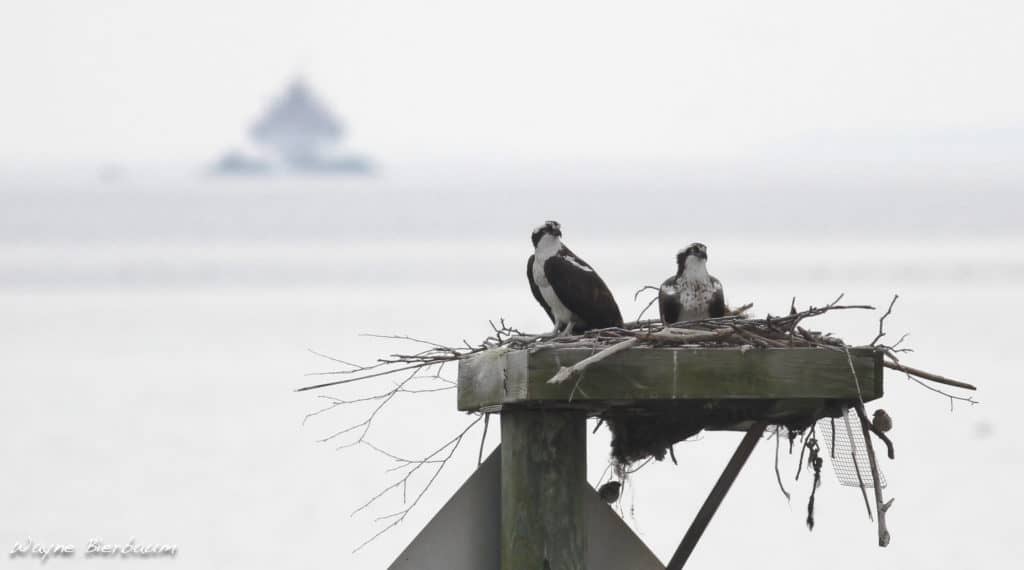Let’s Hear it for Ospreys!

And crabs, oysters, rockfish…
By Meg Walburn Viviano
If there is just one aspect of the Chesapeake Bay we love (okay, aside from boats—we do love the feeling of being far from shore with the breeze and the horizon all around), it is the Bay’s iconic wildlife. You know, the critters we look forward to glimpsing, and sometimes catching and eating. The ones we see on our state license plates. The creatures that, when we get to observe them in their element on the water, it feels like we’ve been let in on a special secret.
It always takes my breath away when I walk down to the marshy waterfront on Cypress Creek and accidentally startle a great blue heron. This long-legged, elegant bird can go from perfect motionlessness to full flight in mere seconds. “Ooh, there he goes,” I find myself saying in a hushed whisper as the heron whooshes away.
As our seasoned Sporting Life angler Dennis Doyle recounts, the pursuit of a rockfish can take one’s breath away, too. His description of fishing for a striper as it surface-strikes is like art, a carefully choreographed dance with rod and reel. The thrill of the chase is certainly at play with this fish.
Then, of course, there’s the obvious iconic species, the blue crab. I don’t have to tell you why we love these. The delicious tradition of steamed crabs is emblematic of the Bay. In addition to the crabs’ delectable taste, eating them continues an age-old social tradition. Friends and families sit down to pick crabs together; it’s a meal passed down through generations. Even in this day and age, you can’t rush a crab feast and you can’t be distracted by your cell phone. Your hands would be way too dirty for scrolling.
Even after the COVID-19 pandemic put a damper on the large-scale crab feast, the Annapolis Rotary Club has found a way to sustain its epic annual event. For the second year, it’s a crab feast to-go: one the CBM Bay Weekly team will be enthusiastically participating in. I can’t wait to see who the fastest crab picker on staff will be.
And then of course, there are oysters. We eat them (celebrate National Oyster Weekend at a local restaurant this weekend!) and we help restore their population in the Bay (check out Chesapeake Beach’s newly expanded sanctuary reef ).
To appreciate our final iconic Chesapeake species, you’ll have to look up. Our favorite bird of prey, the osprey, can be seen flying across the water with a fat fish in its talons, or building an engineering marvel of a nest out of sticks and debris woven together.
But what happens when those nests are built too close to human habitat? Ospreys favor a high platform, whether it’s a navigational marker on the water or a tall light pole at a mall or public park. In our feature story, we look at what happens when ospreys establish their homes in human domain. It’s a scenario that can have a very different set of outcomes.
What can we do to honor the Chesapeake’s glorious creatures? We can start by making smart environmental choices as individuals. And we can keep supporting the organizations devoted to protecting our wildlife—the oyster growers, the bird rescue groups, and the clean water advocates that make the Bay healthier for us all.
